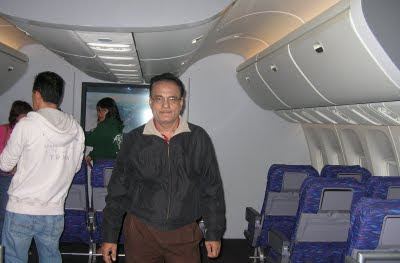3S Consultant is having hands on experience in versatile fields for Continual Business and Quality Improvements in an organization. A highly professional approach is followed for imparting the best Training & Consultancy services, supplemented by a thorough guidance for value addition to your products and services.
Welcome to 3S Consultant
Welcome to 3S Consultant
spoken english Highlights:
Personalized coaching
Homely Environment
Voice & Modulation Guidance
Affordable Fee
Flexible Timings
Free Demo
Contact:
3sconsultant,
203, Vasudha Apts,
Lane Opp.Saibaba Temple Main gate,Bhagyanagar Colony,OPP.KPHB,
Kukatpally,Hyderabad - 500072
Call: 04023063955 & 9392969943
Following Training modules are structured to suit different categories of people.
1. Spoken English for students, employees, housewives & businessmen
2. Personality Development
3. Interview Skills
4. Presentation Skills
5. Communication skills
6. Time Management.....ETC;
Saturday, December 17, 2011
Sunday, September 4, 2011
Spoken English
Wednesday, August 3, 2011
Information and Analysis
Leadership
Thursday, July 28, 2011
Quality Assurance of Products
Monday, July 25, 2011
Human Resource Utilization
Insights for Improvement
Wednesday, July 20, 2011
Continuous Improvement of Individuals
Tuesday, July 19, 2011
Continuous Improvement of Processes
Wednesday, July 13, 2011
Continuous Improvement of Organizations
Tuesday, July 12, 2011
Focuses of continuous Improvement
For continuous improvement, efforts must be focused on all three objectives. Past quality improvement efforts focused on the individual after analyzing the product.The individual was usually someone on the factory floor. In the example just given, the operator possibly would be retrained and the problem considered solved; but what happens when the operator is sick or transferred? The new operator may make the same mistake. Although it is important to start with individuals, permanent solutions are often not reached with this approach.
Usually, an individual can provide valuable input leading to permanent solutions. These often require changes in the process and organization. Perhaps a combination of changing fixtures and product design can lead to an enduring solution to the problem. Also,seeking solutions in the process and organization can suggest more individual improvements. Training in design for assembly for a product development engineer may be appropriate. Training in quality for the plant manager may start needed changes in the organization also.
Monday, July 11, 2011
Continuous Quality Improvement
Sunday, July 10, 2011
Continuous Improvement
Customer Orientation
Human Resource Excellence - continued
Thursday, July 7, 2011
Human Resource Excellence
Product, Processes and Systems Excellence
Management Leadership
Imperatives of Total Quality Management
Definition of Total Quality
Definition of Total Quality
It is defined as an organization-wide approach towards quality which results in performance leadership in meeting customer's requirements by doing the 'right thing right the first time and every time'. The phrase 'Performance Leadership' implies that the organization has to be the best of its kind when compared with its competitors worldwide.
So what exactly is TQM?
TQM is relatively a new approach to the business of management. It seeks to improve product and service quality and increase customer satisfaction by restructuring traditional management practices. The application of TQM is unique to each organization that adopts such an approach. Common attributes which are vital for the implementation of TQM are customer focus, strategic planning, effective leadership, continuous improvement, fact based management, team work and involvement of all.
In TQM environment, company recognizes that the word 'Quality' includes 'quality management' as much as it means 'improving the management of quality'. In fact, taking steps for improving the Quality of management in the organization should take place before improving any thing else.
Need for Total Quality Management:
Rising customer expectations
Increasing competitive process and competitive position of organization
Internal pressure for improvement
How to do value addition in existing methods
To get the best from the people
Changing perceptions of vendors and customers
Perceptions of managers and work force
Organizational priorities for improvement
To survive.

















